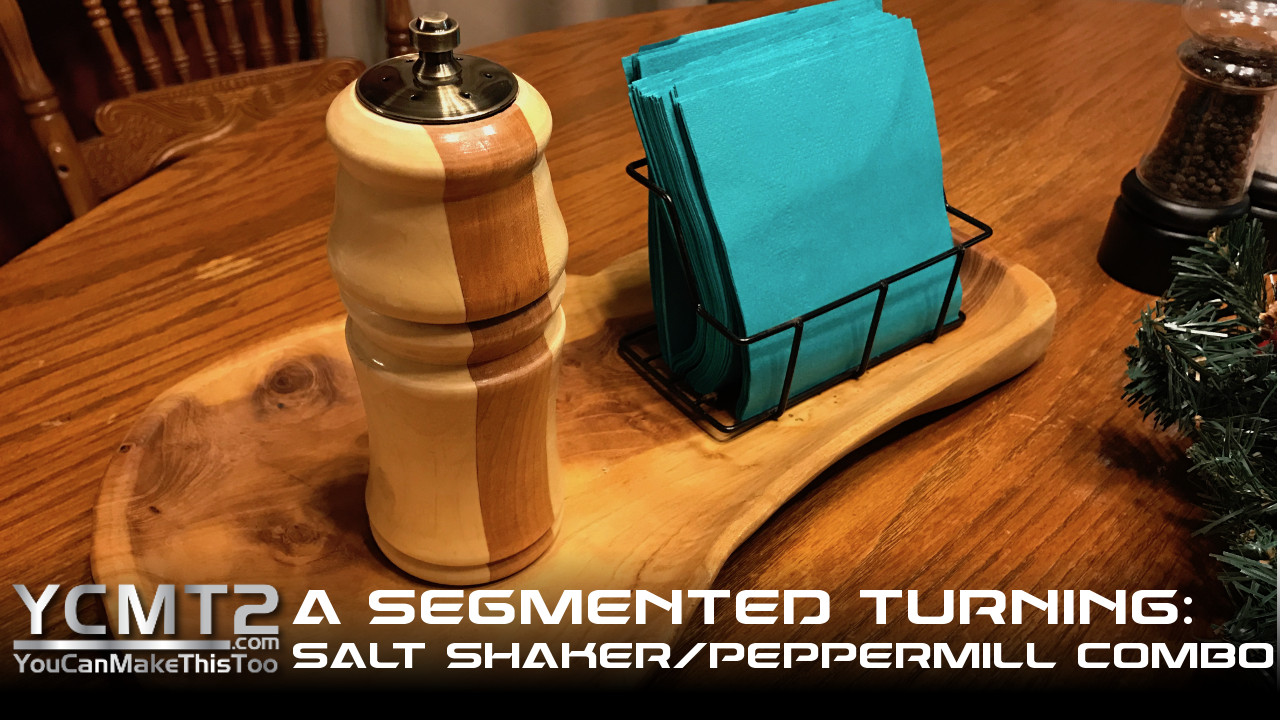A Segmented Turning: Salt Shaker/Peppermill Combo
Peppermills make for great gifts so I cranked out for Christmas! Here’s how I made a segmented one.
This post contains affiliate links, for more information see my disclosures page.
Check out the tools I use.
One Winter it seemed endearing to turn pepper mills for some of my relatives for Christmas. I turned three different salt shaker / pepper mill combination pieces.
This video focuses on the most interesting of the three, the segmented one, but if you look closely you will notice the other pepper mills in some of the shots. Why focus on the segmented one? Because the making of the three was identical, with the exception of the extra steps needed to glue up a segmented blank.
For a variety of reasons, but primarily because it was what I had on hand, I chose to use cherry and soft maple for the segmented mill. The cherry proudly takes the center of the piece, and in the video you'll notice that it is actually two separate pieces of cherry and not a single board that makes up the middle. Why? Well, I was trying to conserve my stock and it was just easier that way. It did make the glue up slightly more complicated, but the extra glue joint running down the middle was of no consequence.
As soon as the blank was dry and square, I drilled a 1 1/16" hole all the way through the middle, completely removing the offending glue joint. No one will be the wiser that the cherry middle was not a single piece.
Segmented turnings are a lot of fun because it is easy to experiment with different flavors and see what comes out. One thing to bear in mind though, is to try to keep the grain flowing in the same direction. Grain changes are tricky turners, so you do not want to inadvertently glue up a blank full of multi-directional grain that will be a nightmare to turn without being riddled with tear out.
I will not go much into the mechanics of making or assembling the mill because it is very specific to whatever kit is being used, and they come with adequate instructions. Just be ware the instructions may not be perfect, and it is often better to use the hardware in the kit as the true measure, and not whatever dimensions are listed on the spec sheet.
